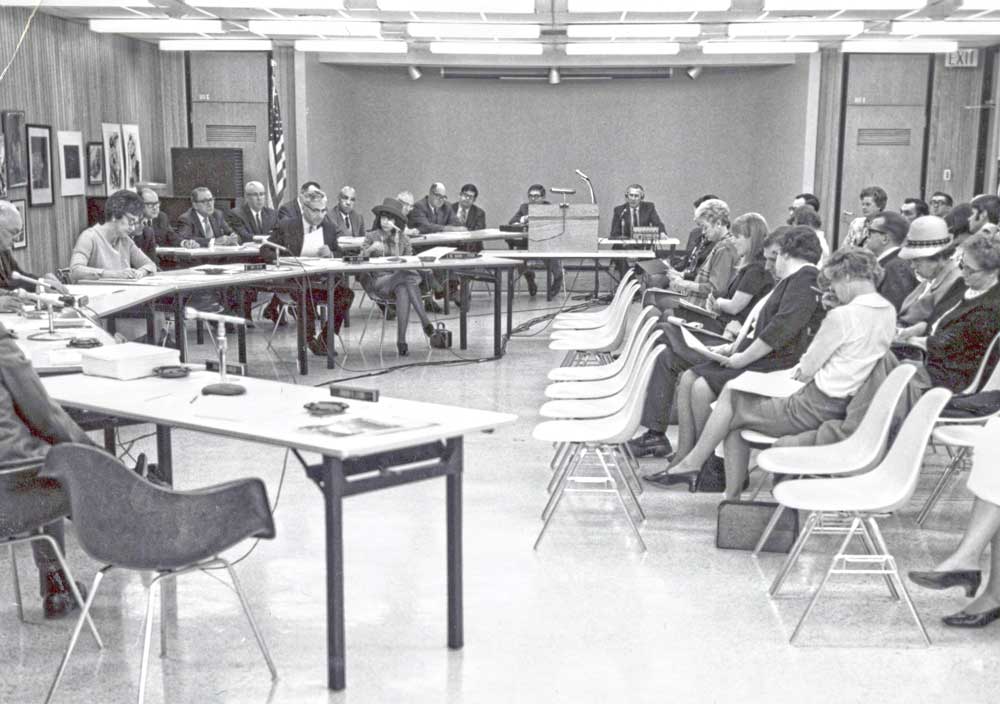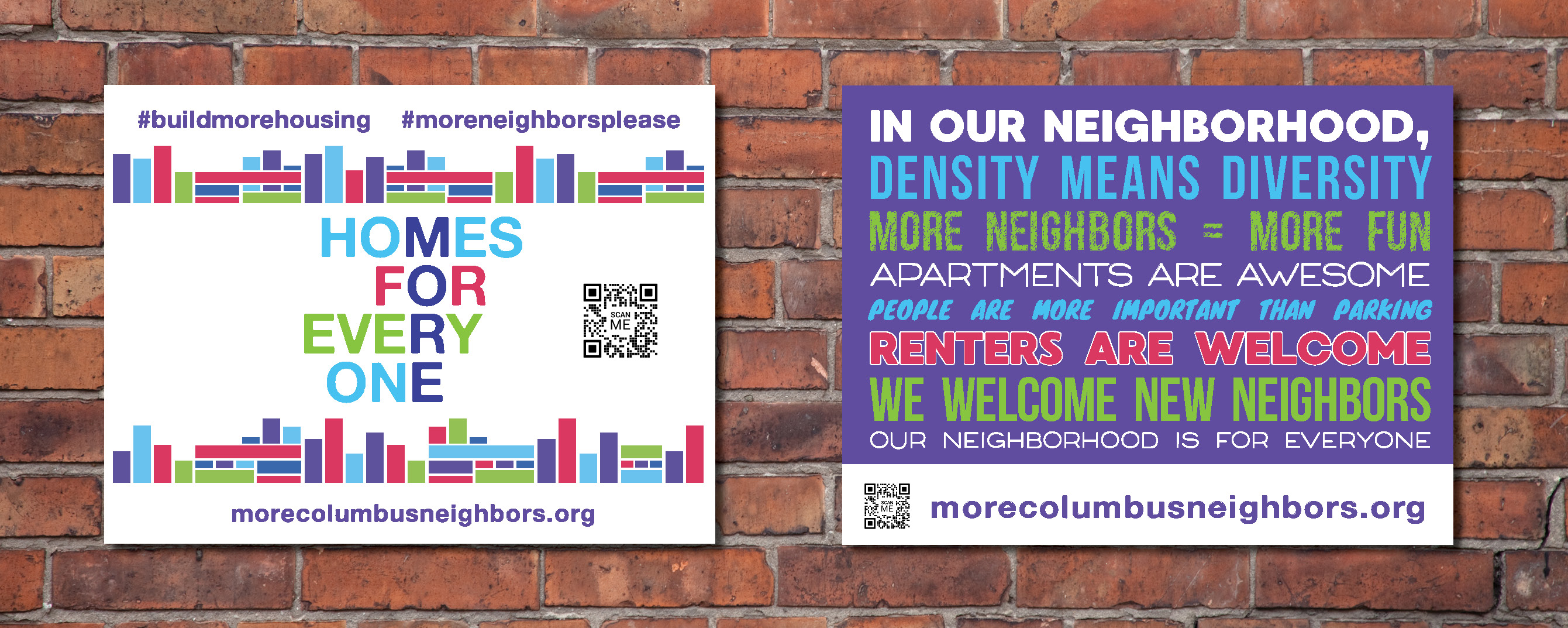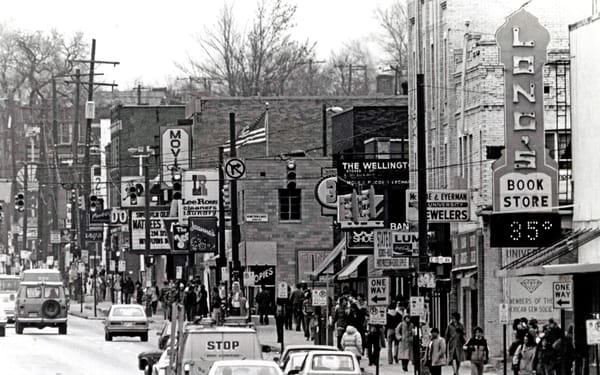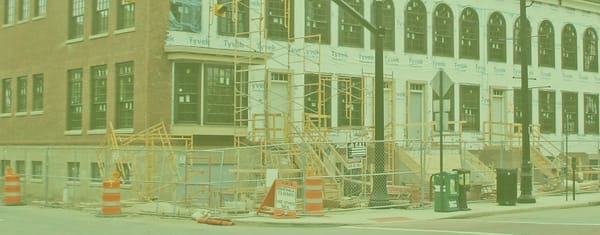'Zone In' event next week!
And how homeowners can weaponize public meetings.

Upcoming Event: June 27

Building Up My Block: How Decisions Get Made
A discussion on how and why development happens (or doesn't)
When: Tuesday, June 27 from 6pm to 7:30pm
Where: Lincoln Theater, 769 E. Long Street
As part of the Zone In initiative to reform zoning regulations in the City of Columbus, panelists will offer perspective on the development process, rules that govern how things get built, and opportunities and barriers that drive development. Limited seating available. Panelists will include:
- Shannon Hardin, Moderator
Columbus City Council President - Otto Beatty III, Entrepreneur, Attorney, Developer
- Beatrice Nokuri, Attorney and Developer
- Al Edmundson, Business Owner and Community Advocate
- Shannon Pine, Chief Zoning Official, City of Columbus
If you’re planning on going, keep an eye out for N4MN Columbus folks (including Mindy Justis) at the event. They’ll be wearing N4MN stickers and look forward to striking up a conversation with you!
📚 The Book Beat

Participatory institutions provide the appearance of democratic decision-making, but are in fact dominated by well-resourced special interests invested in the status quo.
Einstein, K. L., Glick, D. M., & Palmer, M. (2019). Neighborhood Defenders: Participatory Politics and America’s Housing Crisis. Cambridge University Press; Cambridge Core.
Einstein, Glick, and Palmer pored through thousands of meeting minutes and matched public commenters with the voter roll to make fascinating advances in the scholarly understanding of public engagement and socio-demographic status. Unsurprisingly, they found that commenters are generally older, whiter, and more likely to own property than average among voters.
The authors show how “individuals use their privileged status as current members of a community to prevent new housing, and thus close its doors to prospective new members” (p. 4).
As they exist, land use review institutions and public input processes empower NIMBY voices over others, many of whom are not at the table and whose interests aren’t considered. These largely volunteer review boards amplify anti-development voices, which would be more “muted” without these empowering institutions (p. 15).
The finding that local public processes often lead to harmful outcomes when considered from a regional scale is important, as planning practitioners are trained to be “enthusiastic about neighborhood participation” (p. 31).
The dominant perspective in planning is that “more opportunities for participation will yield a more just planning process” (Ibid.). However, Einstein et al. clearly show how that is not the case when it comes to housing production in Massachusetts. This should lead planning practitioners and local elected officials to both question and reconsider the meaning and design of public input processes.
The authors offer a few recommendations for addressing the disparity in housing production and scaling back the numerous opportunities for public comment to stop, stall, and shrink housing projects.
One important suggestion is to focus on affluent communities, similar to how Massachusetts’ Chapter 40B overrides local zoning restrictions if projects meet a certain threshold for affordable housing units. If less than 10% of a town’s housing is considered affordable, Chapter 40B allows developers (by right) to exceed local density standards with affordable units. One strength of this policy approach is that communities which already have at least 10% of their housing stock considered to be affordable are not triggered by the provision, typically putting the onus on exclusionary jurisdictions rather than major cities.
Authors also recommend scaling-up conversations from hyper-local neighborhood groups to a political level that considers regional housing need.
This could help re-frame housing production as a shared responsibility in a metropolitan area. Housing exclusion in one community is, by necessity, forced inclusion in another.
🗞️ Recent Housing News + Discussions 🏘
Local
- “A great step forward,” Senate’s budget restores proposed affordable housing tax credit program
21 June 2023, Ohio Capital Journal - Struggle continues for Ohioans to find housing
21 June 2023, Spectrum News 1 - Can Columbus turn the tide of rising homelessness and food insecurity? Officials think so
20 June 2023, Columbus Dispatch - Lessons from the 1950s: How central Ohio's housing crisis can learn from history's boom
14 June 2023, WOSU - Report highlights rising rents for Ohioans compared to wages - stresses need for help
14 June 2023, Columbus Dispatch - 'Zoning in Jerome Township is broken': Local housing case goes to Ohio Supreme Court
8 June 2023, Columbus Dispatch - Housing crisis has far-reaching consequences for many Central Ohioans
29 May 2023, ABC 6 Columbus - Despite growth, census shows Columbus aging. Is there housing for a grayer Central Ohio?
25 May 2023, Columbus Dispatch - Town Hall: The hidden costs of the housing crisis in Central Ohio
24 May 2023, Fox 28 Columbus - Dublin lacking affordable housing as 92% of workers living outside city, report shows
23 May 2023, NBC4 Columbus
National
- Maxine Waters Proposes Billions to Expand Low-Income Housing
21 June 2023, The New York Times - Gen Z-ers Are Moving Out. Where Are They Looking to Buy Homes?A new study suggests that young buyers are most prevalent in smaller cities.
15 June 2023, The New York Times - Affordable Housing Woes Paint a ‘Bleak Picture’
14 June 2023, The New York Times - Single-Family Zoning Linked With Income and Race Segregation9 June 2023, Governing Magazine
- Vermont Latest State to Preempt Single-Family Zoning
7 June 2023, Planetizen
Show neighbors your welcoming spirit!
Brighten up your yard or window with one of our colorful signs. Contact us to arrange a pick-up or delivery!





